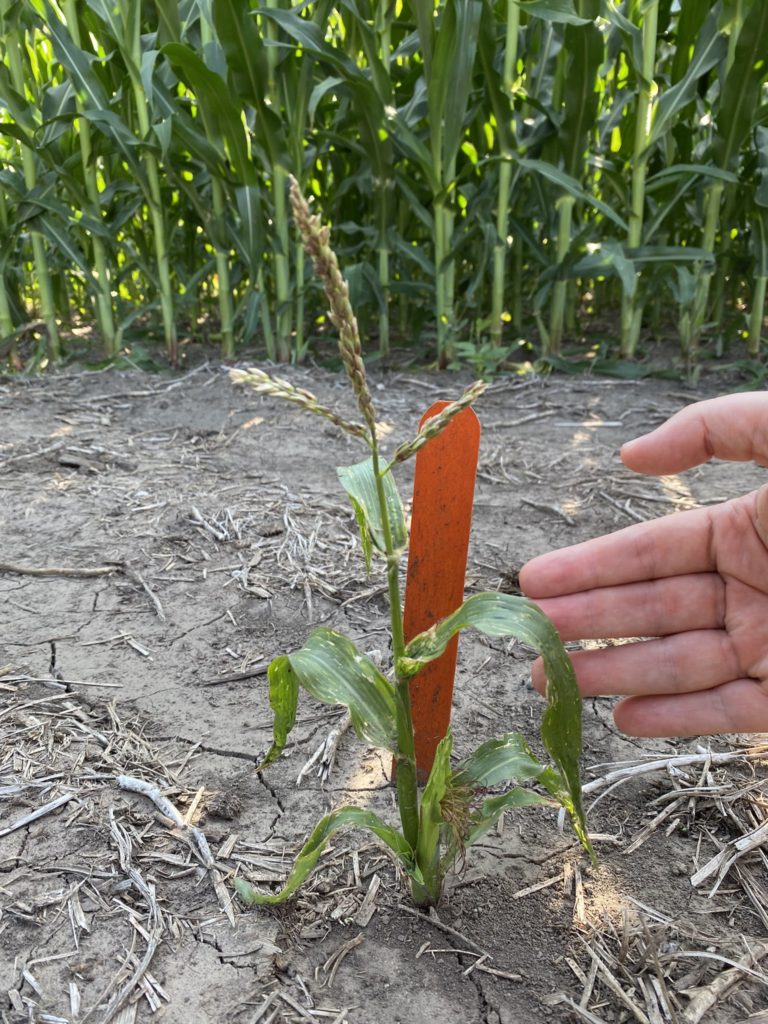Back in 2015 we were one of the first groups to get to try out Fast Flowering Mini-Maize (FFMM) [1]. The plants were about two feet tall, flowered in five weeks, and were ready to harvest only 61 days after we planted them. But what if I told you that the same genotype could be even smaller?
This past summer a technician in the lab rediscovered our carefully guarded stash of FFMM seeds and we decided it was time to increase them. While we did most of the increase in the greenhouse, the idea came up at the same time we were finalizing the plans for our summer nursery* so we decided to plant the line in the field as well.
And this was the result:

In the field fast flowering mini maize took almost 50 days to flower vs the 33 days we saw in the greenhouse. The delay is pretty typical. Plants in the field get planted into cold soil that is typically also a lot drier than freshly watered soil we play into in the greenhouse. So the kernels take longer to germinate and initially develop more slowly.
But despite its longer live cycle this plant is ridiculously tiny. At under a foot in height it still managed to produce a viable tassel and ear. It also looks like it only produced six leaves that were viable through flowering vs the seven-to-eight leaves we were typically see at flowering when we grow genetically identical plants in the greenhouse.
I don’t know how much of this was simply going from a greenhouse to the field and how much was something weight about our nursery this summer (a lot of the stuff we planted was unhappy to the point I worry about some kind of pesticide carryover from whatever grew there last year). In any case it’s a fun example of how genetic potential and growing environment both play roles in determining the final characteristics of a plant.
*A nursery is the field set aside by a maize genetics group to increase seed or make crosses to set up future experiments. It’s typically smaller to make it easy (or at least possible) to walk the whole field each day, and it needs to be as easily accessible as possible because someone needs to be out in that field every single day during flowering season applying shoot bags and setting up and taking down crosses. Often we will hand plant the nursery because we only need 5-12 plants per row (hard to do with a machine planter) and for many of these lines we don’t have any space kernels to waste. Our nursery is located in a small cornfield right on campus, while our bigger field experiments are in another farm the university owns about fifteen minutes drive away.
- McCaw, M. E., Wallace, J. G., Albert, P. S., Buckler, E. S., & Birchler, J. A. (2016). Fast-flowering mini-maize: Seed to seed in 60 days. Genetics, 204(1), 35-42.